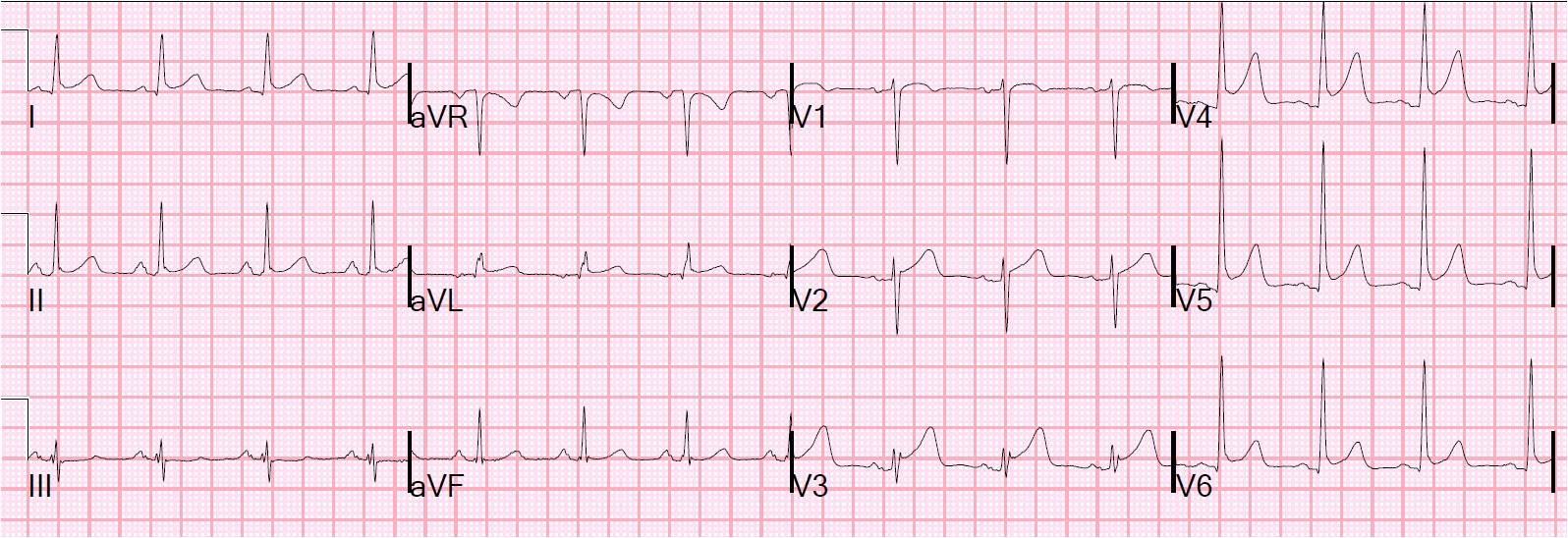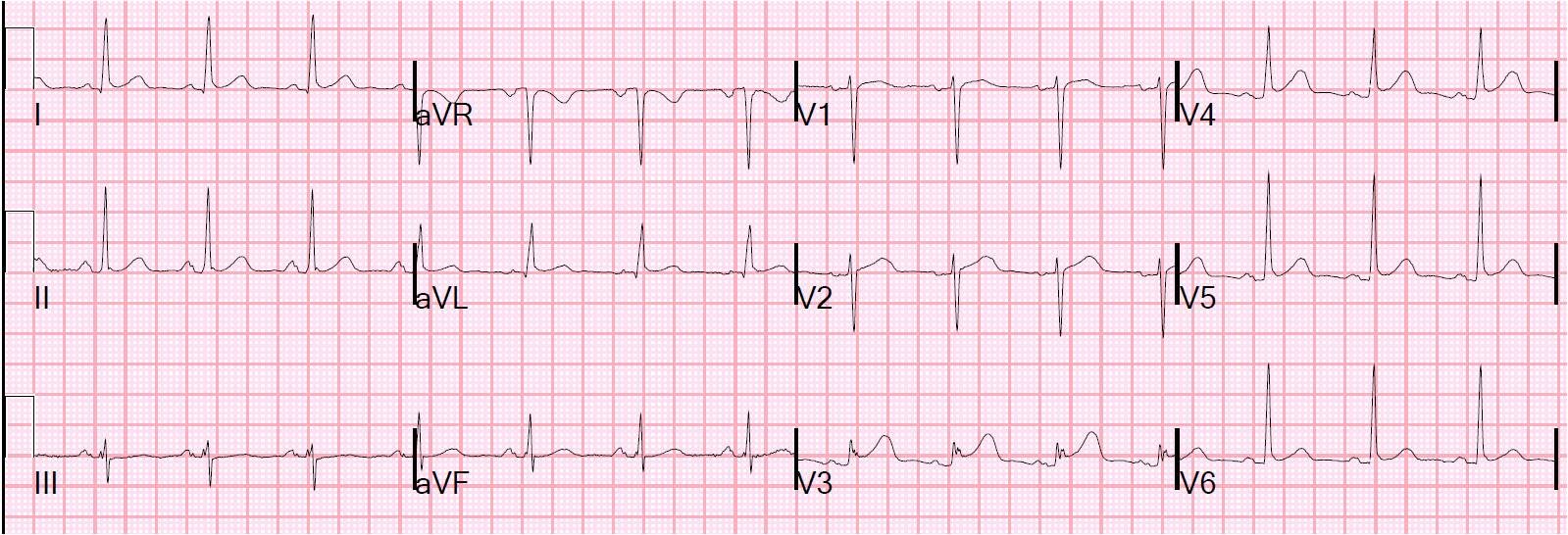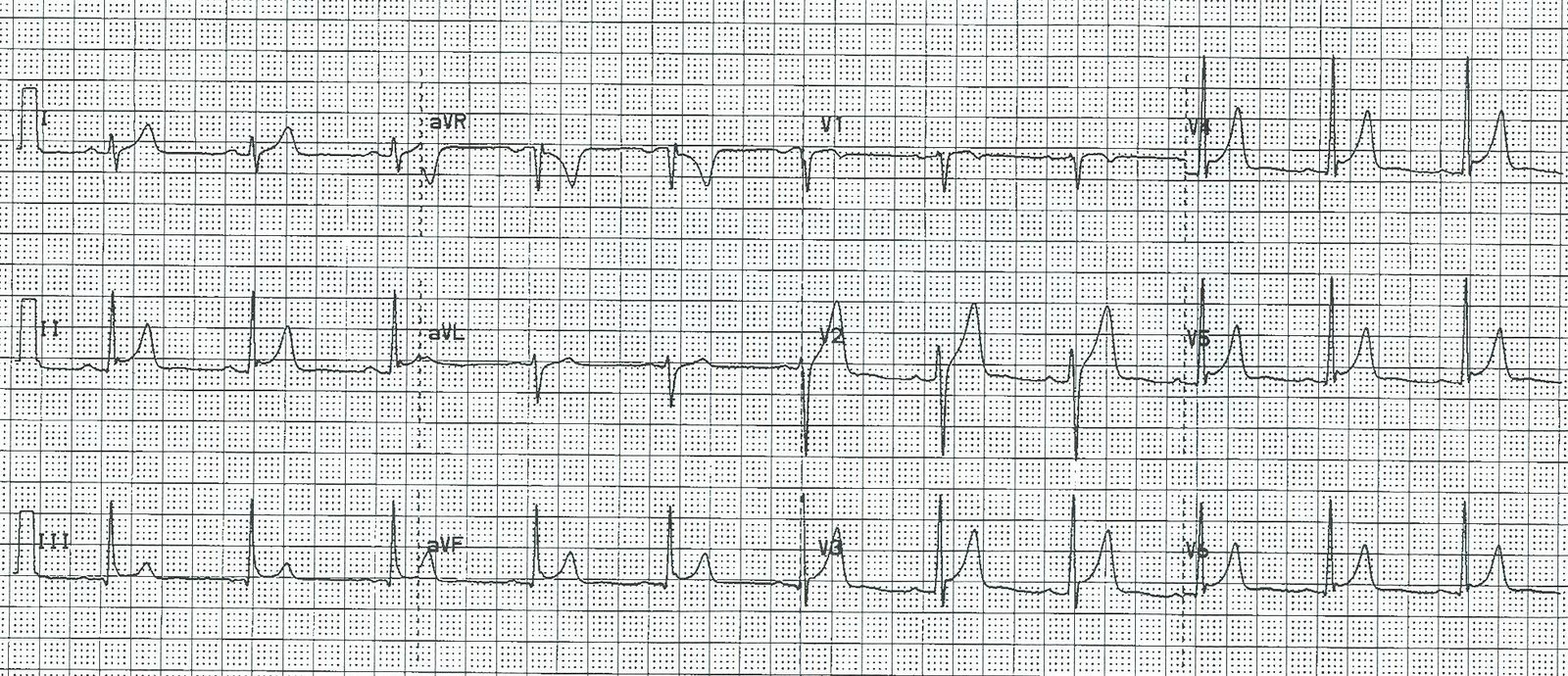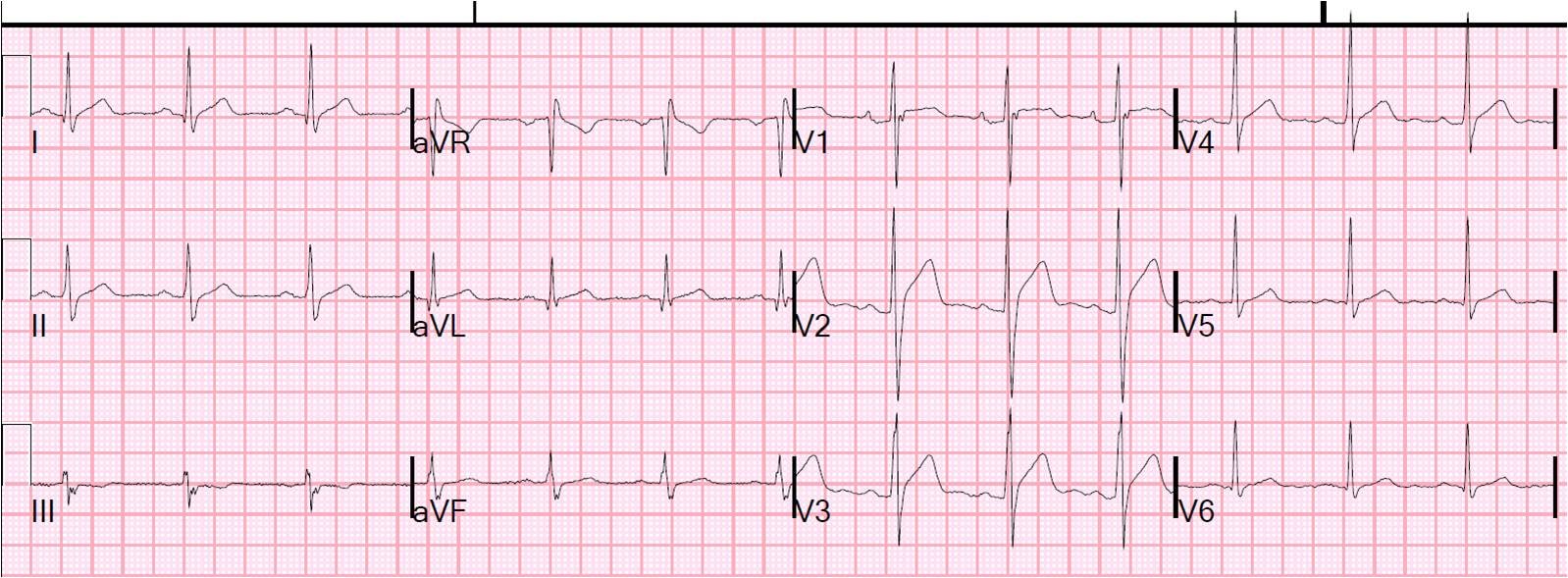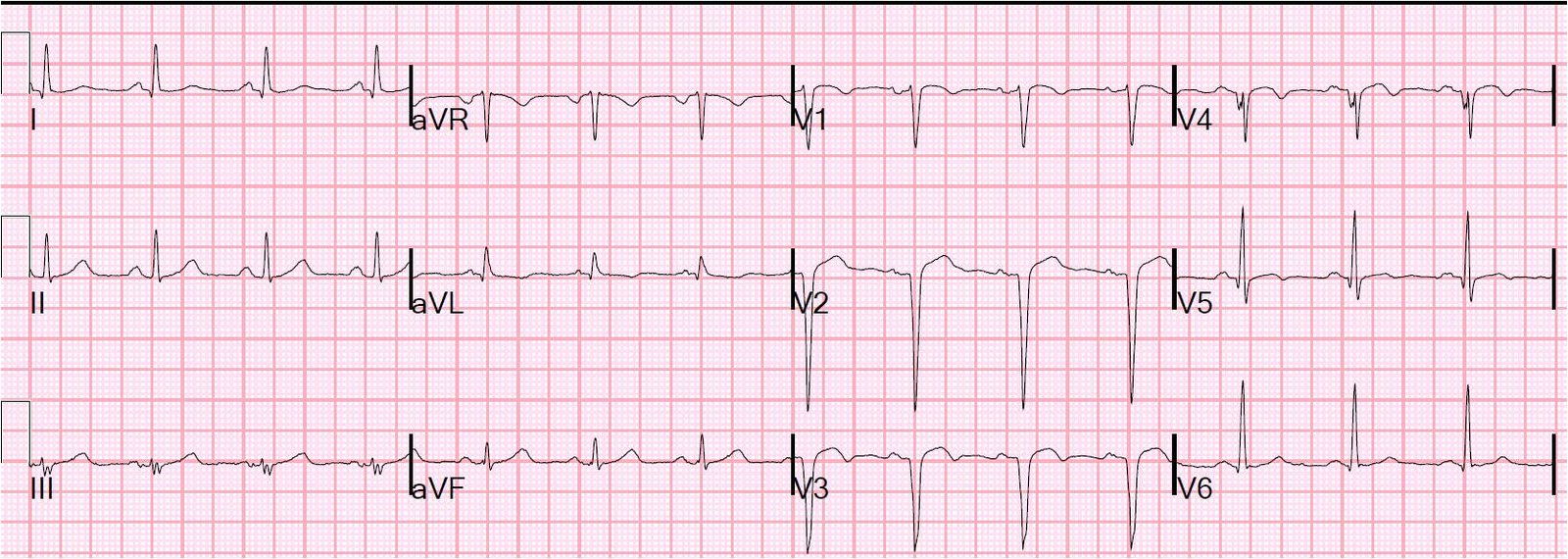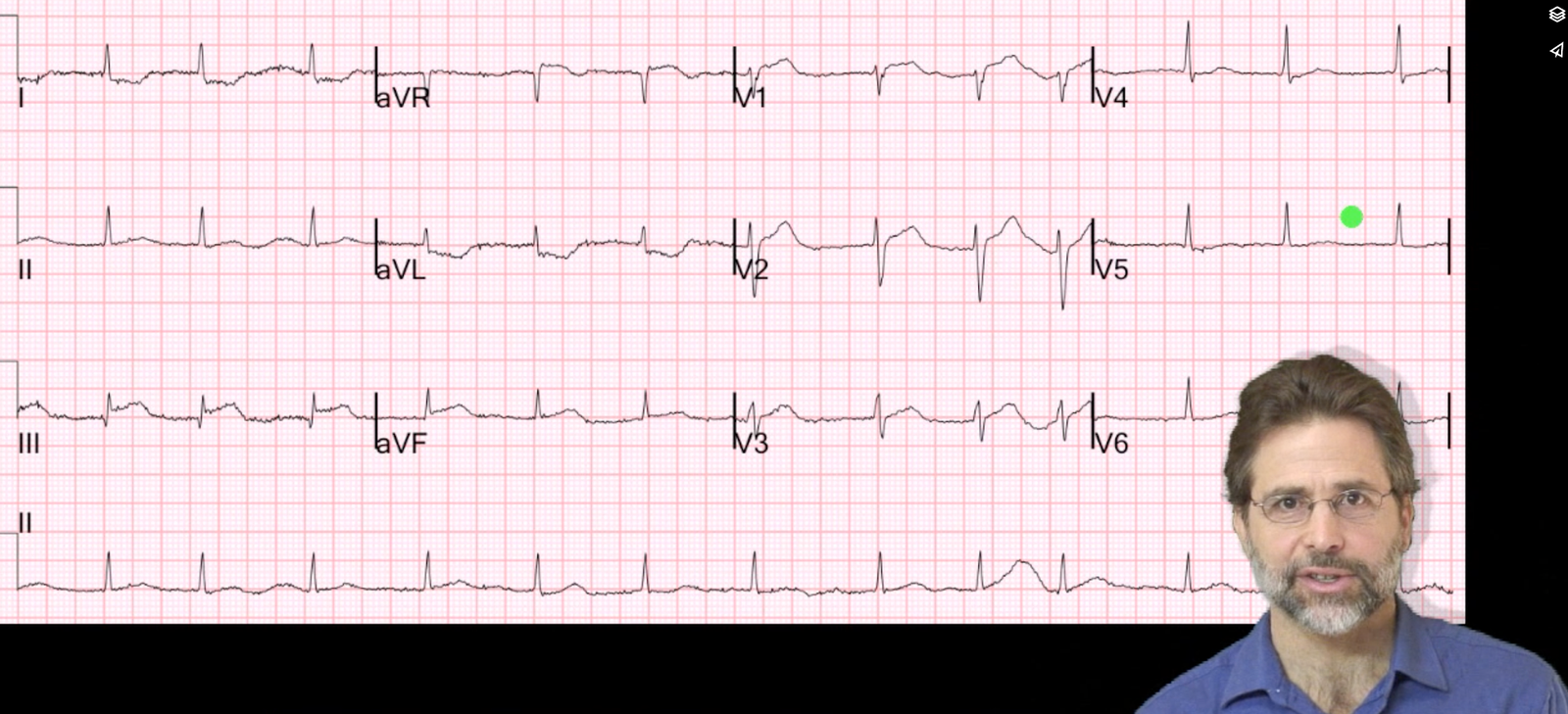As I have pointed out in other posts, I have developed an equation to help in the electrocardiographic differentiation of anterior early repolarization from anterior STEMI. If the equation [(1.196 x ST Elevation in mm at 60 ms after the J-point in V3) + (0.059 x computerized QTc) – (0.326 x R-wave Amplitude in mm in V4)] has a value greater than 23.4, vs. less than 23.4, it is quite sensitive and specific for LAD occlusion.
Remember: when you are uncertain, look for old ECGs, do serial ECGs, then, if you still need to, you can get an immediate echocardiogram, and if you ultimately cannot be certain that it is not STEMI, then you may have to risk a false positive cath lab activation. That happens.
Case 1. One of my partners phoned me when I was out. He was worried about this ECG. He used his iPhone to photograph it, then sent it to me by text message:
I told him that it is very unlikely to represent STEMI.
Here is a previous ECG from one year ago:
 |
| The new one looks different from this one, especially in V3, but this can happen in early repol |
This was recorded the next AM, after the patient had ruled out with serial troponins:
Here are all 3 side by side:
Case 2.
A Hennepin residency graduate called me to ask about an ECG. I happened to be in the ED so I asked her to fax it. She was worried about diffuse ST elevation and whether there was MI or pericarditis.
As for pericarditis: the ratio of ST elevation to T-wave in V6 is less than 25 percent, so pericarditis is unlikely. Furthermore, there is no significant PR segment depression.
Case 3. A 19 yo with stab wound to the chest. After viewing the ECG, there was concern for LAD laceration.

